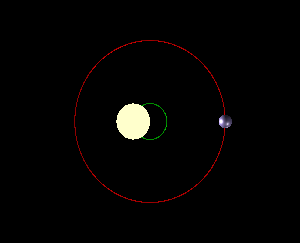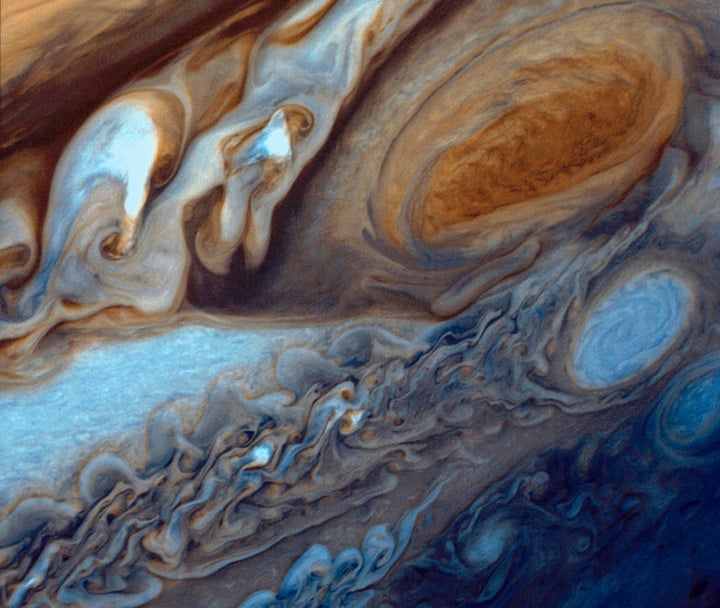Here’s something that might come as a bit of a shock: Jupiter doesn’t orbit the sun.
Planets revolve around stars though, right? Well, not exactly.
Let’s start with centres of gravity. Every object has one, but the location of each will depends on its shape.
A sledge hammer’s centre of gravity, for example, is skewed by the mass of the handle. You’d probably find that it would be towards the bottom of its head.
A similar rule applies to planetary orbits. As NASA explains, in the case of Earth and the sun, the two bodies orbit around the centre of the mass between them.
Scientists call this point the barycenter.
Imagine that the light end of the hammer is Earth and the heavy end is the sun, except that Earth is much, much smaller and the sun is even bigger.
Because Earth is so small in comparison, it will have a negligible effect on the position of the barrycenter. In this case, it would be located just off the very center of the sun.
But Jupiter is 318 times more massive than Earth, meaning that the barrycenter is further from the sun’s centre. So, when Jupiter orbits the sun, the sun also orbits around the off-centre point.
And that’s how Jupiter makes the sun wobble.
When NASA scientists look into the night sky, they use this nugget of information to search for large planets in other solar systems.

Jupiter Facts
Jupiter is a giant ball of gas that’s 11 times wider than Earth and some 300 times more massive.
It takes 12 years for Jupiter to orbit the sun and yet the planet rotates so quickly that a single day lasts just 10 hours.

In many ways Jupiter has its own small solar system. Its composition is very similar to that of a star: hydrogen and helium, while its sheer size means that it hasfour large moons (Io, Europa, Ganymede and Callisto) and over 60 smaller objects known to be in orbit.
While you can’t normally see them, Jupiter also has a huge system of rings much like Saturn.
It was discovered earlier this week that the planet’s Great Red Spot pumps heat into its atmosphere, making it unusually hot given its distance from the sun.
